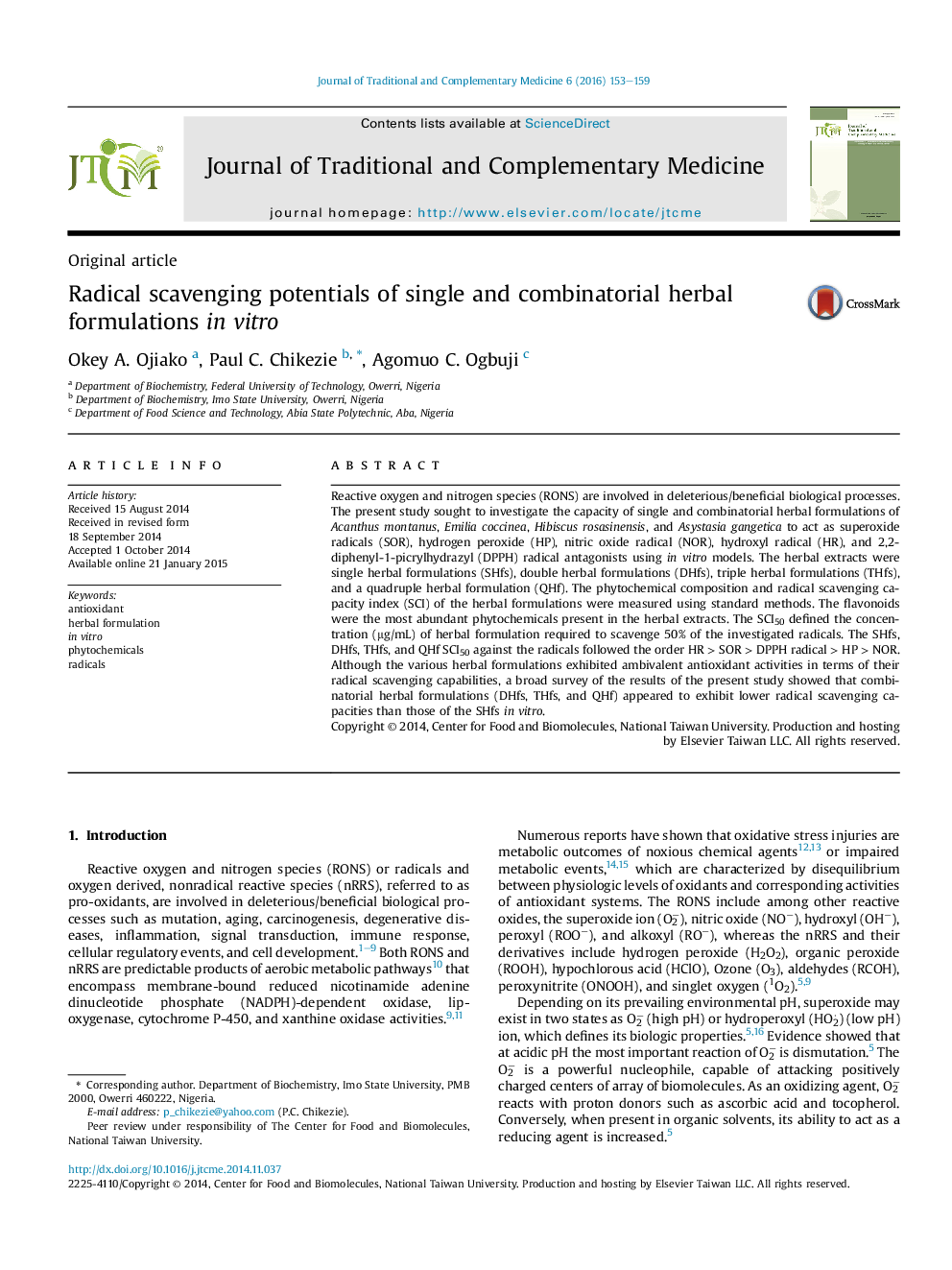| Article ID | Journal | Published Year | Pages | File Type |
|---|---|---|---|---|
| 3099693 | Journal of Traditional and Complementary Medicine | 2016 | 7 Pages |
Reactive oxygen and nitrogen species (RONS) are involved in deleterious/beneficial biological processes. The present study sought to investigate the capacity of single and combinatorial herbal formulations of Acanthus montanus, Emilia coccinea, Hibiscus rosasinensis, and Asystasia gangetica to act as superoxide radicals (SOR), hydrogen peroxide (HP), nitric oxide radical (NOR), hydroxyl radical (HR), and 2,2-diphenyl-1-picrylhydrazyl (DPPH) radical antagonists using in vitro models. The herbal extracts were single herbal formulations (SHfs), double herbal formulations (DHfs), triple herbal formulations (THfs), and a quadruple herbal formulation (QHf). The phytochemical composition and radical scavenging capacity index (SCI) of the herbal formulations were measured using standard methods. The flavonoids were the most abundant phytochemicals present in the herbal extracts. The SCI50 defined the concentration (μg/mL) of herbal formulation required to scavenge 50% of the investigated radicals. The SHfs, DHfs, THfs, and QHf SCI50 against the radicals followed the order HR > SOR > DPPH radical > HP > NOR. Although the various herbal formulations exhibited ambivalent antioxidant activities in terms of their radical scavenging capabilities, a broad survey of the results of the present study showed that combinatorial herbal formulations (DHfs, THfs, and QHf) appeared to exhibit lower radical scavenging capacities than those of the SHfs in vitro.
Graphical abstractRadical scavenging capacity indices (SCI50) of single and combinatorial herbal formulations.Figure optionsDownload full-size imageDownload as PowerPoint slide
